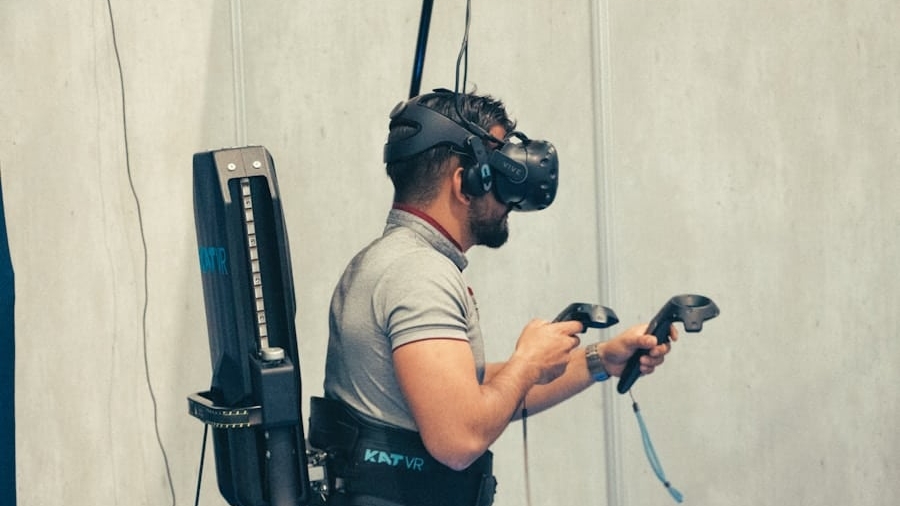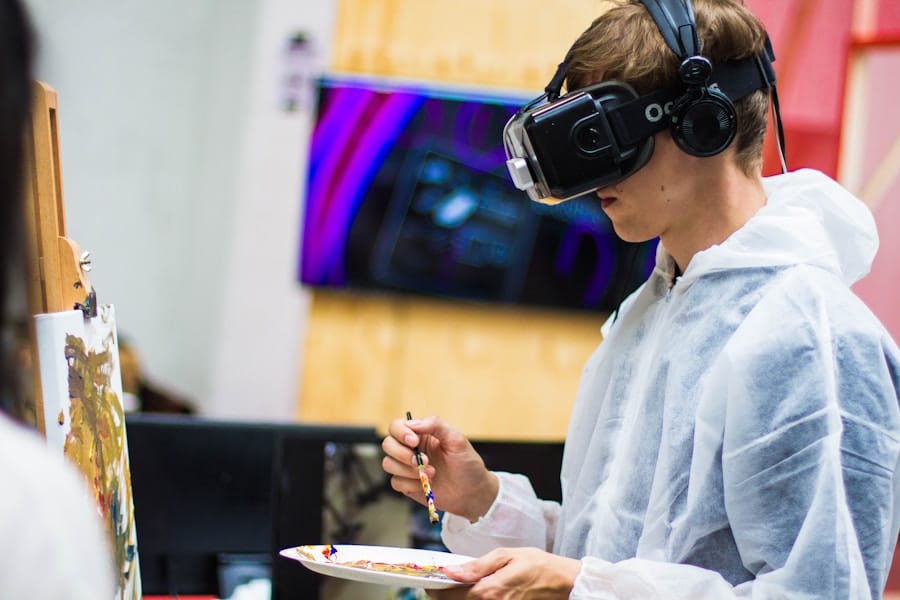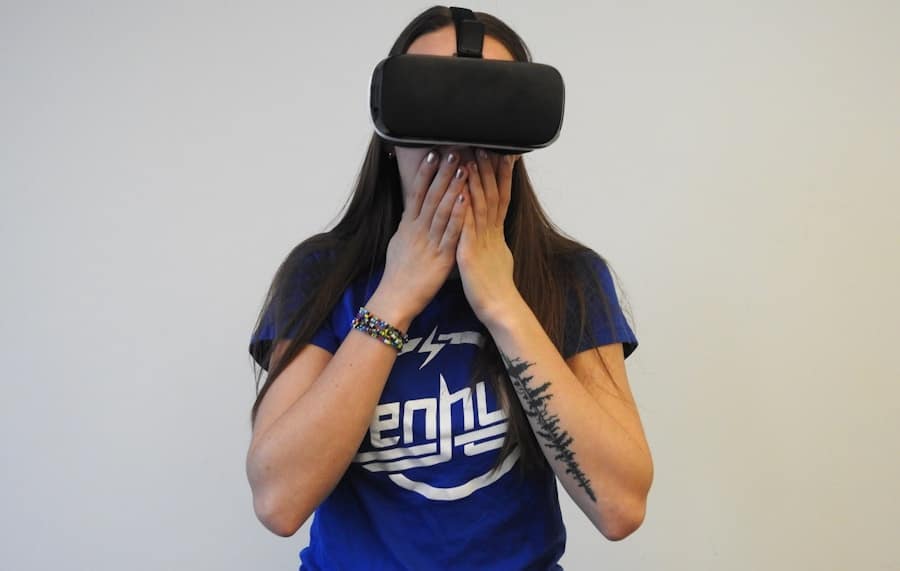Virtual Reality (VR) has emerged as a transformative technology across various sectors, and its application in disaster recovery training is particularly noteworthy. As organizations grapple with the increasing frequency and severity of natural disasters, the need for effective training methods has never been more pressing. Traditional training approaches often fall short in preparing personnel for the unpredictable nature of real-world emergencies.
VR offers a solution by creating immersive environments that simulate disaster scenarios, allowing trainees to engage in realistic, hands-on experiences without the associated risks. This innovative approach not only enhances learning outcomes but also equips individuals with the skills necessary to respond effectively in high-stress situations. The integration of VR into disaster recovery training represents a paradigm shift in how organizations prepare for crises.
This capability allows for a more comprehensive understanding of disaster dynamics, enabling participants to practice their responses in a controlled setting. As we delve deeper into the benefits and applications of VR in disaster recovery training, it becomes evident that this technology is not merely a trend but a vital tool for enhancing preparedness and resilience in the face of disasters.
Key Takeaways
- VR training for disaster recovery provides a realistic and immersive learning experience for trainees.
- VR training enhances decision-making and critical thinking skills by simulating real-life disaster scenarios.
- Immersive learning environments in VR training are important for effective disaster recovery training.
- Challenges and limitations of VR training for disaster recovery can be overcome with proper planning and implementation.
- The future of VR in large-scale disaster recovery training holds great potential for improving preparedness and response capabilities.
The Benefits of VR Training for Disaster Recovery
Safety in Training
Trainees can experience high-stakes situations without the fear of real-world consequences. For instance, emergency responders can practice their skills in a simulated earthquake or flood scenario, allowing them to make mistakes and learn from them without endangering lives or property.
Customization and Effectiveness
This safety aspect encourages participants to engage more fully with the training material, fostering a deeper understanding of their roles and responsibilities during actual disasters. Moreover, VR training can be tailored to meet the specific needs of different organizations or communities. Customizable scenarios allow trainers to focus on particular challenges that may be unique to a region or industry.
Regional and Industry-Specific Training
For example, a coastal community might prioritize training for hurricane response, while an urban center may focus on active shooter situations. This level of customization ensures that participants are not only learning general disaster recovery principles but are also equipped with the knowledge and skills relevant to their specific contexts. The result is a more effective training program that enhances overall preparedness.
The Role of VR in Simulating Realistic Disaster Scenarios
The capacity of VR to simulate realistic disaster scenarios is one of its most compelling features. By immersing trainees in lifelike environments, VR can replicate the chaos and unpredictability of actual disasters. For instance, during a simulated wildfire scenario, participants can experience the sights and sounds of crackling flames and emergency sirens, which can evoke emotional responses similar to those encountered in real-life situations.
This heightened sense of realism not only makes the training more engaging but also helps participants develop critical situational awareness. Furthermore, VR can incorporate various variables into simulations, such as changing weather conditions or unexpected obstacles, which can significantly impact decision-making during a disaster. This dynamic aspect of VR training allows participants to practice adaptability and quick thinking—skills that are essential when responding to emergencies.
By facing these challenges in a controlled environment, trainees can refine their strategies and improve their ability to make informed decisions under pressure.
How VR Enhances Decision-Making and Critical Thinking Skills
In disaster recovery scenarios, effective decision-making is crucial. The immersive nature of VR training enhances this skill by placing participants in situations where they must assess information quickly and make choices that could have significant consequences. For example, during a simulated mass evacuation due to an impending flood, trainees must evaluate various factors such as population density, available resources, and potential hazards while determining the best course of action.
This process encourages critical thinking and helps participants develop a systematic approach to problem-solving. Additionally, VR training can facilitate collaborative decision-making among team members. Many disaster recovery efforts require coordination among multiple agencies and organizations, making teamwork essential.
VR environments can be designed to include multiple participants who must communicate and collaborate effectively to navigate challenges together. This collaborative aspect not only enhances individual decision-making skills but also fosters a sense of camaraderie and shared responsibility among team members, which is vital during actual disaster responses.
The Importance of Immersive Learning Environments in Disaster Recovery Training
Immersive learning environments are pivotal in enhancing the effectiveness of disaster recovery training. The sensory engagement provided by VR—sight, sound, and even touch—creates a more impactful learning experience compared to traditional methods such as lectures or tabletop exercises. When trainees are fully immersed in a scenario, they are more likely to retain information and apply it in real-world situations.
Research has shown that immersive experiences can lead to higher retention rates and improved performance in practical applications. Moreover, immersive environments can evoke emotional responses that are often absent in conventional training settings. Experiencing fear, urgency, or stress within a simulated disaster context can help trainees understand their emotional reactions during actual emergencies.
By preparing individuals not just cognitively but also emotionally, VR training fosters a more holistic approach to disaster recovery preparedness.
Overcoming Challenges and Limitations of VR Training for Disaster Recovery
Cost and Accessibility
Despite its numerous advantages, the implementation of VR training for disaster recovery is not without challenges. One significant barrier is the cost associated with developing high-quality VR simulations. Creating realistic environments requires substantial investment in technology and expertise, which may be prohibitive for some organizations, particularly smaller agencies or non-profits.
Maintenance, Updates, and Technological Limitations
Additionally, ongoing maintenance and updates are necessary to ensure that simulations remain relevant and effective as new technologies and methodologies emerge. Another challenge lies in the potential for technological limitations or user discomfort during VR experiences. Some individuals may experience motion sickness or disorientation when using VR headsets, which could hinder their ability to engage fully with the training.
Addressing the Challenges
To address these issues, organizations must invest in user-friendly technology and provide adequate training on how to navigate VR environments effectively. Furthermore, incorporating alternative training methods alongside VR can help accommodate diverse learning preferences and ensure that all participants benefit from the training experience.
Case Studies: Successful Implementation of VR in Disaster Recovery Training
Several organizations have successfully integrated VR into their disaster recovery training programs, demonstrating its effectiveness in enhancing preparedness. One notable example is the use of VR by the Federal Emergency Management Agency (FEMA) in the United States. FEMA has developed immersive simulations that allow emergency responders to practice their skills in various disaster scenarios, including hurricanes and wildfires.
These simulations have proven invaluable in helping responders refine their techniques and improve coordination among different agencies during actual emergencies. Another compelling case study comes from the healthcare sector, where hospitals have begun using VR to train staff for mass casualty incidents. For instance, a major hospital system implemented a VR program that simulates an active shooter situation within its facilities.
Healthcare professionals participated in realistic drills that required them to make quick decisions regarding patient care while ensuring their own safety. Feedback from participants indicated that the immersive experience significantly enhanced their confidence and preparedness for handling such critical incidents.
The Future of VR in Large-Scale Disaster Recovery Training
As technology continues to advance, the future of VR in large-scale disaster recovery training looks promising. Innovations such as artificial intelligence (AI) integration could further enhance simulations by creating adaptive scenarios that respond dynamically to trainee actions. This would allow for even more personalized learning experiences tailored to individual strengths and weaknesses.
Additionally, advancements in haptic feedback technology could provide users with tactile sensations that mimic real-world interactions, further increasing immersion. Moreover, as organizations recognize the value of VR training, we may see broader adoption across various sectors beyond emergency services and healthcare. Industries such as construction, transportation, and public safety could benefit from customized VR training programs designed to address specific risks associated with their operations.
As collaboration between technology developers and industry experts continues to grow, we can expect innovative solutions that will redefine how organizations prepare for and respond to disasters on a global scale. In conclusion, the integration of virtual reality into disaster recovery training represents a significant advancement in preparedness strategies. By providing immersive experiences that enhance decision-making skills and foster collaboration among teams, VR has the potential to revolutionize how organizations approach disaster response training.
As we look ahead, continued investment in this technology will undoubtedly yield substantial benefits for communities facing an increasingly uncertain future.
A related article to How VR Facilitates Large-Scale Disaster Recovery Training is “What Trends Are Predicted for 2023.” This article discusses the upcoming trends in technology and software development that will shape the future of various industries, including disaster recovery training. To learn more about the latest trends and innovations in the field, check out this article.
FAQs
What is VR?
VR stands for virtual reality, which is a computer-generated simulation of an environment that can be interacted with in a seemingly real or physical way by a person using special electronic equipment, such as a helmet with a screen inside or gloves fitted with sensors.
How does VR facilitate large-scale disaster recovery training?
VR facilitates large-scale disaster recovery training by providing a realistic and immersive simulation of disaster scenarios, allowing trainees to practice their response and decision-making skills in a safe and controlled environment. This can help improve preparedness and coordination among first responders and emergency personnel.
What are the benefits of using VR for disaster recovery training?
The benefits of using VR for disaster recovery training include cost-effectiveness, scalability, risk-free training, realistic simulations, and the ability to track and assess trainee performance. VR can also provide training opportunities for scenarios that are difficult to replicate in real life.
What are some examples of VR applications in disaster recovery training?
Some examples of VR applications in disaster recovery training include simulating natural disasters such as earthquakes, floods, and wildfires, as well as man-made disasters such as terrorist attacks or industrial accidents. VR can also be used to train for specific tasks such as search and rescue operations, medical triage, and coordination of resources.



